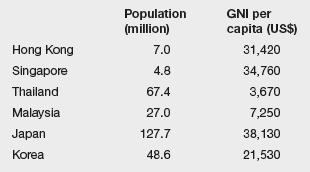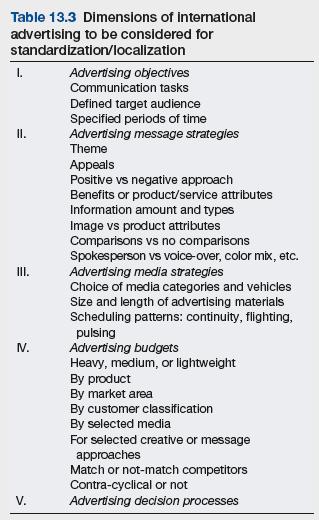Christa Clothing International is a well-known international company headquartered in Blusen City, North Carolina in the United
Question:
Christa Clothing International is a well-known international company headquartered in Blusen City, North Carolina in the United States. Christa specializes in fashion clothing for men and women.
In 1991 two 30-year-old former university classmates founded an importing business. They purchased cheap fabrics from Indonesia and the Philippines and sold them to garment makers in the United States. These two men, Frank Carmino and Saul Green, built their importing business rapidly and profitably. They soon decided to expand into the fashion business. In 1992 Christa launched two new brands of its own, ‘Bluse’ for women and ‘Jacke’ for men. In 1993 they merged the two into an international brand, Blujac. The brand change was made in anticipation of entering European markets.
Christa’s success in the United States provided a firm foundation for expansion into Belgium, Germany, and the Netherlands in 1995; followed by Sweden, Finland, Canada, and France in 1996; Denmark, the United Kingdom, Switzerland, and Norway in 1997; Austria in 1998; Spain and Italy in 1999; and Portugal in 2000.
Before doing any further planning, Mr Carmino felt he needed further information. He knew that the World Bank had reported population and the purchasing power parity measure of gross national income per capita in these countries in 2008 to be approximately (www.worldbank.org/data):

Mr Carmino ascertained that the Korean market was open to foreign products, and that several large, wellknown international advertising agencies had branch offices or joint ventures with Korean agencies in Seoul.
Korea has well-developed mass media and more than 1% of gross national product is spent on advertising. Korean GNI per capita continues to rise as recovery from the Asian crisis continues. Its population in 2008 was 48.6 million and 50.4 million by 2014.
Mr Green, who had headed the European expansion, was a little concerned that the Korean cultural, economic, legal, political, and social conditions were somewhat different from those with which he was familiar. For example, he was aware of the following somewhat different cultural, legal, and political conditions:
(1) Korea has experienced somewhat peaceful changes in government through what some were willing to recognize as democratic elections
(2) the Korean culture differed from the US culture with respect to language patterns, religions, the level of individualism versus collectivism, the desire for harmony versus confrontational behavior, and so forth.
Mr Green had some experience with these kinds of differences and similarities in Europe, but knew he would need specialized help to enter Korea and other Asian markets.
In addition to population, income, and age statistics, market potential in each country depends on many other factors such as local habits and customs of consumers regarding purchasing and use of clothing, availability and consumer use of mass media, and the role of clothing as symbols of the lifestyles of young people.
Recently, Mr Green met Cathy Peters, a young vice president of a New York advertising agency. She was born in Germany, has a degree in economics from the University of London, and had lived for several years in Japan as a teenager (where her father headed a US–Japanese joint venture advertising agency). She had several years’ experience working as an account executive for US products sold in Korea and had been to Korea several times in a coordinating capacity. Her agency has had a joint venture arrangement in Seoul with a Korean agency for some years. Mr Green and Mr Carmino felt that Ms Peters’ multicultural background and Asian experience were such that she would be an ideal person to head Christa’s expansion into Asian markets.
Ms Peters was hired and given a mandate to study the situation and prepare recommendations to proceed. She began a broad program of desk research to make use of available published statistics and other information available from published sources. She was aware that some companies had tried ‘global’ branding, advertising, and marketing, and that some had failed while others had succeeded. She was determined to think carefully about the conditions under which advertising objectives, strategies, and executions should or should not be standardized, transferred (or extended) from existing markets to new markets in Asia, and controlled from headquarters or controlled in local markets (see Table 13.3)...........

Questions
1. Should Christa Clothing International enter Asian markets? If so, in which countries, and in what order? If not, why not?
2. Assuming Christa decided to enter one or more of the Asian markets, what should be the company’s advertising objectives, message strategies, media strategy, and budget?
3. Can the company standardize its advertising or must it individualize? Can the company transfer advertising from other markets? Defend your answer.
Step by Step Answer:

International Marketing And Export Management
ISBN: 9781292016924
8th Edition
Authors: Gerald Albaum , Alexander Josiassen , Edwin Duerr





